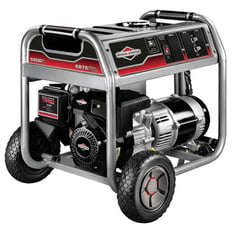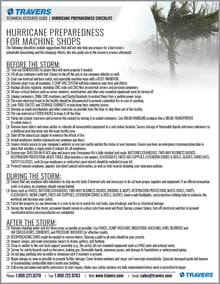 Commonly used after power outages or during cleanup and recovery efforts following disasters such as hurricanes, portable generators are internal combustion engines used to generate electricity. There are specific hazards inherent with the use of generators and following the OSHA recommendations below can ensure that workers and others using generators remain safe.
Commonly used after power outages or during cleanup and recovery efforts following disasters such as hurricanes, portable generators are internal combustion engines used to generate electricity. There are specific hazards inherent with the use of generators and following the OSHA recommendations below can ensure that workers and others using generators remain safe.
Hazards Associated With Generators:
Shock & Electrocution:
The electricity created by generators has the same hazards as utility-supplied electricity as well as additional hazards because generator users often bypass the safety devices (such as circuit breakers) that are built into electrical systems. The following precautions are recommended to reduce the risk of shock and electrocution hazards:
- DO NOT attach a generator directly to the electrical system of a structure unless a qualified electrician has properly installed the generator with a transfer switch. Attaching a generator directly to a building electrical system without a properly installed transfer switch can energize wiring systems for great distances and creates a risk of electrocution for utility workers and others accessing wires in the area.
- DO NOT overload a generator; this can lead to overheating which can cause a fire.
- Always plug electrical appliances directly into the generator using the manufacturer’s supplied cords or grounded (3-pronged) extension cords. Ensure the cords are free from damage and appropriately rated in watts or amps for the intended use. DO NOT use underrated cords—replace them with appropriately rated cords.
- Use ground fault circuit interrupters (GFCIs), especially where electrical equipment is used in or around wet or damp locations. GFCIs shut off power when an electrical current is detected outside normal paths.
- Make sure a generator is properly grounded and the grounding connections are tight. Consult the manufacturer's instructions for proper grounding methods.
- Keep a generator dry; do not use it in the rain or wet conditions. (If needed, protect a generator with a canopy). DO NOT manipulate a generator’s electrical components if you are wet or standing in water.
- DO NOT use electrical equipment that has been submerged in water, emits a strange odor, or begins smoking.
Carbon Monoxide Poisoning
Carbon monoxide (CO) is a colorless, odorless, toxic gas. Many people die each year from CO poisoning because their generator was not adequately ventilated.
- DO NOT use a generator indoors or in enclosed spaces such as garages. NOTE: Open windows and doors DO NOT prevent CO from building up when a generator is located in or close to an enclosed space.
- Make sure a generator has 3 to 4 feet of clear space on all sides and above it to ensure adequate ventilation.
- DO NOT use a generator outdoors if its placement near doors, windows, and vents could allow CO to seep into the structure and build up in occupied spaces.
- If you or others show symptoms of CO poisoning— dizziness, headaches, nausea, tiredness—get to fresh air immediately and seek medical attention. DO NOT re-enter the area until it is determined to be safe by properly equipped, trained personnel.
Fire Hazards
- Generators become hot while running and remain hot for long periods after they are stopped. Generator fuels can ignite when spilled on hot engine parts.
- Before refueling, shut down the generator and allow it to cool.
- Gasoline and other generator fuels should be stored and transported in approved containers that are properly designed and marked for their contents, and vented.
- Keep fuel containers away from heat generating devices (including the generator itself).
- Do not store generator fuels in your home. Store fuels away from living areas.
Have a specific question about generator usage or safety? Contact our tech team for additional assistance.
PREPARE YOUR SHOP THE RIGHT WAY
TAKE THE STEPS THAT ENSURE YOUR SHOP'S ABILITY TO WEATHER THE STORM
 Use our hurricane prep checklist to proactively protect your shop, using best practices to take measures that ensure your shop is as prepared as possible. You'll find recommendations and a hurricane supply checklist that can help you weather the storm and get back to work, faster.
Use our hurricane prep checklist to proactively protect your shop, using best practices to take measures that ensure your shop is as prepared as possible. You'll find recommendations and a hurricane supply checklist that can help you weather the storm and get back to work, faster.
Download our Machine Shop Hurricane Preparedness Checklist!
By downloading, you'll learn:
- How to best protect your valuable equipment and resources
- Steps to take to protect raw materials, machinery and coolant
- Steps to take before, during and after the storm to help ensure your safety and speed up recovery



